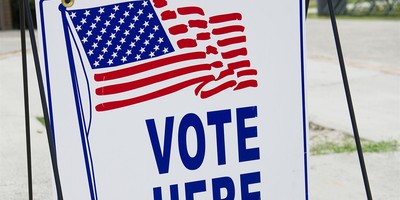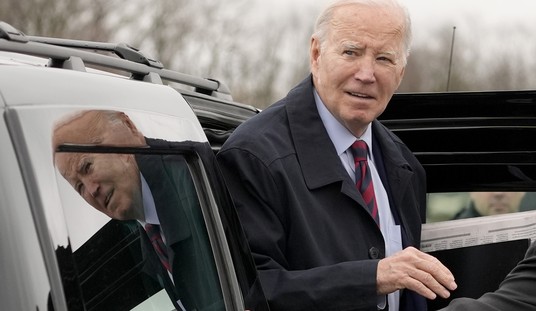For years it’s been reported that Hezbollah – the Lebanese-based Shiia terrorist organization that by any military standards fields one of the world’s most formidable “terrorist armies” – has been receiving money from Iran’s Islamic Revolutionary Guard Corps (IRGC) to the tune of $100 million, annually. That figure was recently, reportedly upped to a staggering $400 million, and more recently to an incomprehensible one-billion U.S. dollars.
In a Jan. 11 piece for Human Events, Middle Eastern terrorism expert Dr. Walid Phares wrote: “This ballistic leap [in funding] would enable the organization to crush any opponent inside Lebanon and engage in worldwide operations against Western democracies and Arab moderates.”
No wonder Hezbollah was able to fight tooth-to-eyeball the way it did against the Israeli Army back in the summer of 2006. No wonder dramatic car-bombing assassinations continue unabated in Lebanon. No wonder the Lebanese parliament is unable to elect a president. No wonder the legitimate army and police have virtually no jurisdiction over Hezbollah-controlled “security zones” in Lebanon. No wonder so much of the Lebanese media – including many Western journalists in that country -- have been corrupted and manipulated by Hezbollah. And no wonder Hezbollah is growing its international presence through the development of terror cells and sympathetic Shiia communities, not only in the Middle East, but throughout much of Europe, Africa, parts of Asia, and the Americas – to include U.S. cities like Charlotte, N.C., Detroit and Dearborn, MI, and Los Angeles.
The money factor is simply too big; and it seems as if the U.S. and our allies in the global war on terror are fighting a losing battle – at least temporarily – as we try to shut down this dangerous cash flow to Hezbollah.
Recommended
Sources in Lebanon and the U.S. tell me that up until a year or so ago, much of the Iranian money was transferred to terrorist organizations – primarily Hezbollah – through financial institutions like Bank Saderat Iran, a Tehran-based bank with some 3,400 branches in Iran and overseas. The U.S. Treasury Department “blacklisted” Bank Saderat Iran in 2006. And the U.S. government has since been trying to push the United Nations to issue an official “trade ban” on the bank.
According to the Los Angeles Times on Saturday, “The U.S. claims Bank Melli and Bank Saderat have funded procurement of sensitive nuclear technology. U.S. officials wanted to blacklist the banks, but fell short of the goal.”
Bank or no bank, the money is literally pouring into Hezbollah’s coffers, ten-fold since 9/11.
“Weapons and money are flowing across the border from Syria into Lebanon,” says Al Sayed Mohammad Ali El Husseini, a former Hezbollah deputy commander-turned-outspoken critic of the organization. “The money comes in U.S. dollars.”
According to Husseini, there are two “specially designated military aircraft” that operate in-and-out of the Damascus airport. “Those airplanes are for the IRGC, and they are never inspected,” he says. “The sole purpose for those planes is to fly between Iran and Syria. They bring both weapons and money: The money is in very large bags similar to what you might ship potatoes in. The money never comes in suitcases because the suitcases could not carry enough.”
The weapons and money, he adds, are then loaded onto trucks and transported over a military route that has existed since the time of Lebanon’s Syrian occupation.
When I ask Husseini if the money is also entering through the airports in Lebanon or banks like Saderat Iran, he says, “No longer.”
It’s not only the Iranian money, but the untraceable revenue generated from the worldwide Shiia Diaspora – not all Shiia, but those friendly to Hezbollah and eager to fund what they deem to be the “resistance” against Hezbollah’s natural enemy, Israel – as well as the drug-growing and processing industry, primarily hashish, in the Bekaa Valley.
Tom Harb, secretary general of Lebanon’s pro-democracy World Council of the Cedars Revolution, says one of the major reasons Hezbollah has not been disbanded (all “militias” in Lebanon are to be disbanded under UN Security Council Resolutions 1559 and 1701) is the money. “The influence of the Iranian money is simply too powerful,” Harb says. “And that influence is reflected in an increasingly strong pro-Hezbollah lobby not only Lebanon, but in Europe and other parts of the world. This is enabling Hezbollah to become the Taliban of Lebanon.”
Phares agrees, and as he so succinctly stated earlier this month: “There is no native force in Lebanon that can match this tidal wave nor even one tenth of it.”
























Join the conversation as a VIP Member